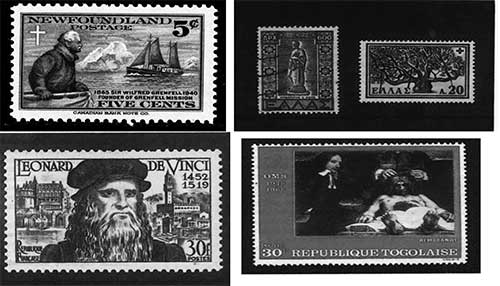A lot of people enjoy collecting stamps as a hobby. Philately is the field that is concerned with the collection of stamps, their study and the understanding of history through them. The word has its origin in French and Greek with Philo, meaning loving and ateleia meaning to get an exemption from. Many renowned personalities loved collecting stamps; the list includes Queen Elizabeth, Beatles singer John Lennon and Charles Chaplin to name a few.

The Origin of Stamps
Stamps were introduced to standardize the cost of sending a letter or a parcel. Before the introduction of stamps, postmen charged a hefty amount for delivery, which in turn led to people trying to cheat their way out of paying the amount. To solve these problems, stamps were invented by the then Postmaster General Sir Rowland Hill.
Stamps are indeed a treasure trove of history as the evolution in art and culture and of course medical progress can be seen through them. I inherited my love for stamps from my father who was an enthusiastic philatelist himself. I slowly discovered to my amazement that medical history too could be traced through stamps, and there was a specialized field for this called medical philately. Medical philately owes its existence to Fielding H. Garrison, a physician himself, who realised the role stamps play in helping us understand significant medical events.
Famous Personalities Honored with Stamps
Sir Wilfred Grenfell, a British missionary, was the first person from the medical field to be honored with a stamp. He worked unflinchingly for the people of Labrador and earned himself the nick name the Labrador doctor. He was primarily concerned with the poor of Labrador and the people who lived near the coast who lacked access to proper medical facilities. He travelled the coast in his hospital ship, treating and curing the people. The stamp depicts Sir Wilfred engaged in humanitarian activities.
The Father of Medicine, Hippocrates, has also been honored with a stamp. In the olden days, people believed that disease was God’s way of punishing people for their sins. It was Hippocrates who dispelled this false notion and established that disease was a by-product of a person’s lifestyle and diet. For his vital contributions, Hippocrates has been featured on a number of stamps. One such stamp depicts the tree of Hippocrates; it is believed that Hippocrates taught his students seated under the tree. Dodecanes island, the birthplace of Hippocrates, was re-integrated with Greece and this event too has been observed by a stamp.
The celebrated Italian, Leonardo da Vinci, also has the honour of being depicted on stamps. His contribution to the medical field has indeed been invaluable with over 750 detailed drawings explaining anatomy dissections. It is to be remembered that Leonardo worked in the most difficult of conditions when embalming methods were yet to be discovered. As a result, he had to work long hours and get the work done quickly.
An anatomy lesson taken by Dr Deyman, with the dissection being performed on a thief, was witnessed by fellow doctors, students, and the general public. This event was memorialized as a painting by Rembrandt, and the painting too finds honour as a stamp now.

Dr.Vidya Saketharaman,
Emergency Physician.
Kauvery Hospital, Chennai
Dr Vidya is an emergency physician in Kauvery Hospitals who loves music, history, postage stamps and car stunts.

